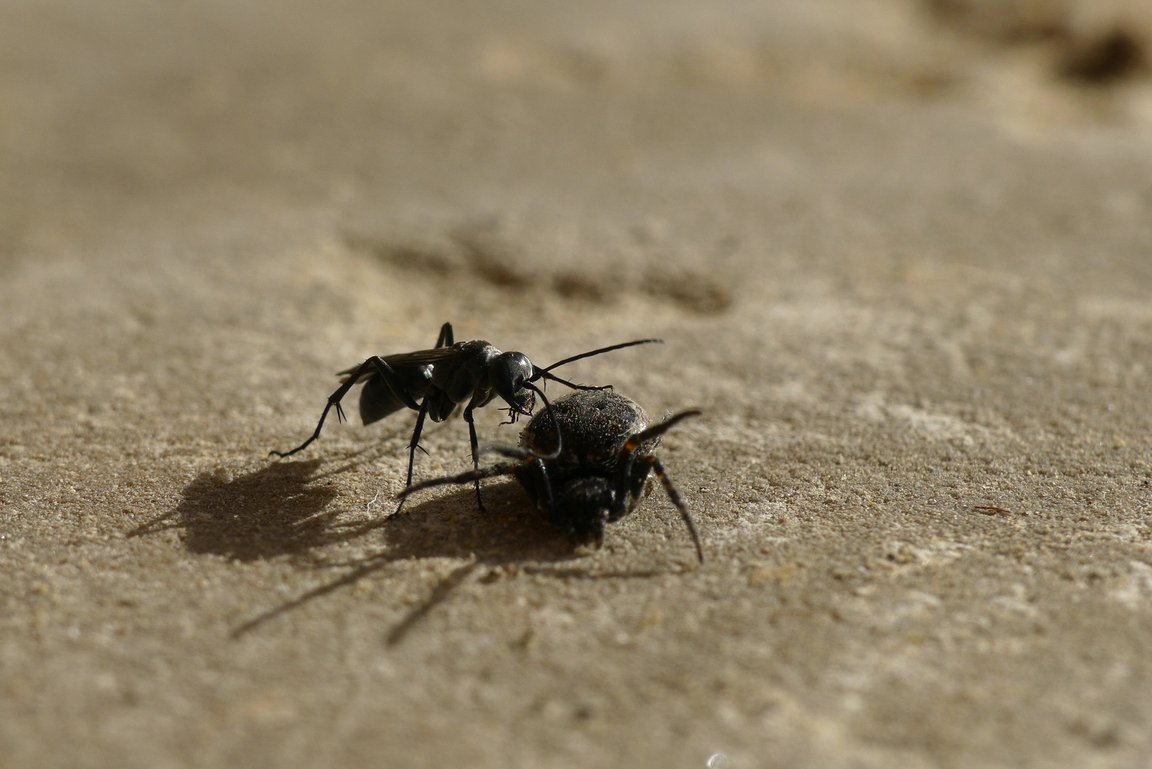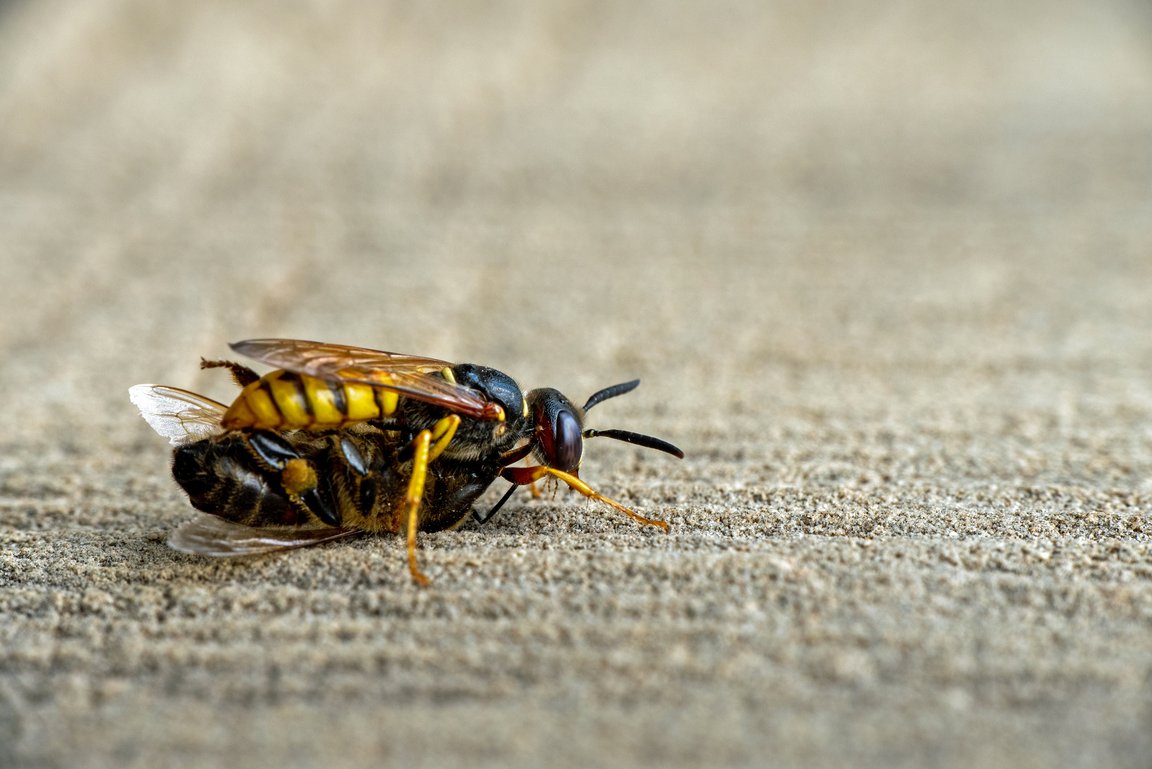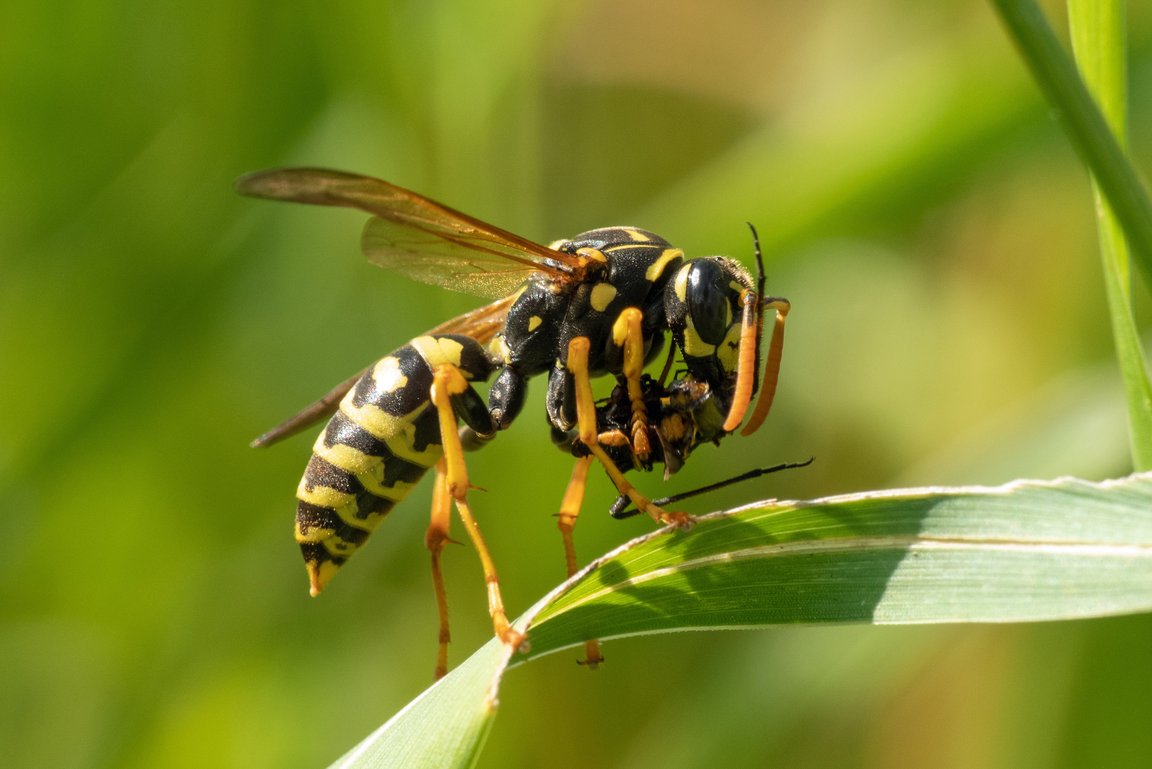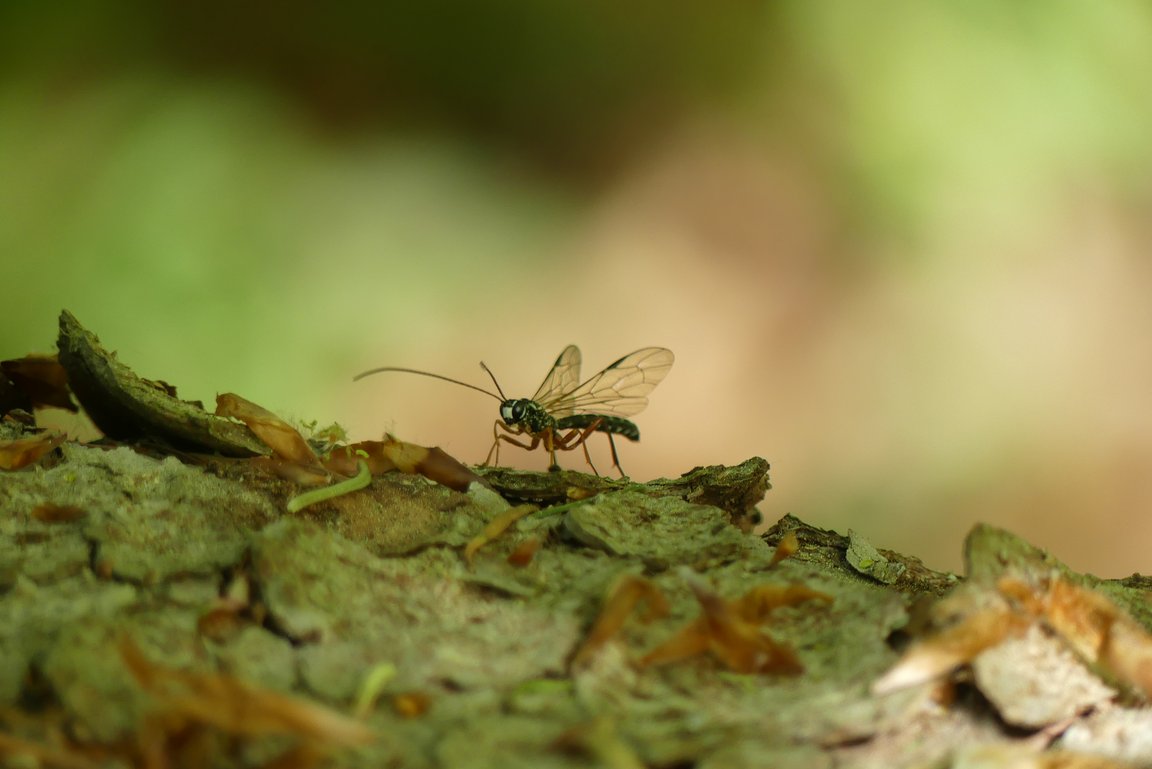- Where does this rather unusual enthusiasm for wasps come from?
- Bees wow, wasps oww! What's behind the image problem?
- How did the idea of investigating AI prejudices against insects come about?
- How was the AI image of wasps determined in the study?
- Top or flop: Which insects does AI like and which does it dislike?
- What is the significance of AI chatbots for environmental education and nature conservation?
- Does AI need extra training when it comes to wasps?
Why does artificial intelligence dislike wasps?
01.07.2025 | M.Sc. Marina MoserCan AI chatbots have prejudices against insects? In a new study, scientists at the Natural History Museum in Stuttgart found that ten popular chatbots portray bees and butterflies in a positive light, while wasps, flies and mosquitoes fare significantly worse. The chatbots mostly ignore a large part of biological diversity, which can have serious consequences for the use of AI in science education and nature conservation. In this blog, Marina Moser, researcher and wasp expert at the Natural History Museum in Stuttgart, talks about her enthusiasm for wasps and the need for an image update for these small creatures as well as training sessions for AI-supported systems.

A sawfly from the genus Corynis (Copyright: M. Moser, SMNS)
Where does this rather unusual enthusiasm for wasps come from?
While studying biology, I visited the insect collection at the Natural History Museum in Stuttgart and became aware of the fascinating diversity and importance of wasps. This discovery motivated me to research wasps, share my knowledge and campaign for their protection.
At first, my enthusiasm for wasps often led to misunderstandings: During one of my first public lectures, for example, I spoke enthusiastically for an hour about the fascinating world of wasps. But during the question and answer session that followed, there was initially an awkward silence. Finally, someone from the audience spoke up and explained that most people had come to get tips on how to protect themselves from wasp attacks – and were now surprised that the lecture was about protecting wasps. Today, I choose my lecture titles more carefully and am particularly pleased when I can give my audience exciting ‘aha’ moments and thus break down some prejudices against wasps.
Bees wow, wasps oww! What's behind the image problem?
Bees, as producers of honey, have always been synonymous with hard work and efficiency. They are known for their well-organised teamwork in huge colonies, and every child learns that bees are very important for pollination and therefore for our food supply. They appear as images on honey jars, flutter through children's books and are, in our imagination, nature's industrious helpers.
Wasps, on the other hand, enjoy a far less favourable image in society. They are said to be aggressive or even believed to sting out of pure malice. Encountering these black and yellow insects at the coffee table or while barbecuing usually triggers panic rather than joy. This negative image is reinforced by mostly one-sided media reports that exaggerate the supposed threat posed by wasps. Unfortunately, the impressive diversity of wasps and their essential role in the ecosystem are often overlooked.
How did the idea of investigating AI prejudices against insects come about?
The number of chatbots that use artificial intelligence to answer questions and generate text is increasing practically every day, and with it the number of their users. This development sparked a lengthy discussion with my colleagues: Would chatbots adopt the popular narrative of bees as hard-working heroes and wasps as aggressive troublemakers, or would they provide neutral, scientifically sound information on request? In a study, we decided to investigate whether chatbots have prejudices against wasps and other insects.
How was the AI image of wasps determined in the study?
For our investigation, we first asked ten popular chatbots, including OpenAI's ‘ChatGPT’, Meta's ‘Llama’, Google's ‘Gemini’ and Microsoft's ‘Copilot’, which words they associate with bees, wasps, butterflies, moths, flies and mosquitoes. We also asked the chatbots to rate these insect groups on a scale from -5 (very negative) to +5 (very positive). In the next step, we asked the chatbots to name ten insects that must be taken into account in nature conservation to find out whether the chatbots would also overrepresent the more popular insects here.
Top or flop: Which insects does AI like and which does it dislike?
The results of our study reveal an interesting and challenging finding: the large language models used by chatbots actually adopt our human prejudices against insects – especially wasps. While universally popular insects such as bees and butterflies are described positively in the virtual dialogues, wasps, flies and mosquitoes come off badly. Bees were consistently rated positively and associated with words that refer to important ecosystem services and their way of life. Butterflies were also rated positively and described with words that allude to their colourfulness or way of life. Wasps, flies and mosquitoes were rated negatively and were often described with judgemental words such as ‘aggressive’, ‘pest’ or ‘annoying’, or associated with stings and diseases. Interestingly, the words that the chatbots associated with wasps mainly referred to social wasps, which make up only a small proportion of the world's wasp diversity. When asked which insects would be most important for nature conservation, the chatbots most frequently named butterflies and bees as high priorities, followed by dragonflies, ants and beetles. Also, regarding the topic nature conservation, the evaluation showed that North American species were mentioned significantly more often, and European species slightly more often, than those found in Africa, Asia or Australia, for example.

"Dear chatbot, which words do you associate with bees, wasps, butterflies, moths, flies and mosquitoes?" Frequently chosen words associated with bees tend to relate to their ecological function and are positive, while other insect groups are associated with both positive and negative words. Frequently mentioned words are displayed larger.
What is the significance of AI chatbots for environmental education and nature conservation?
Our results illustrate how strongly chatbots are influenced by popular narratives and human-generated biases. At the same time, they are becoming increasingly popular and have great potential to provide interactive and personalised learning experiences in a school context that can deepen students' understanding of complex ecological interactions in the ecosystem. AI-based chatbots could also help teachers tailor educational content to individual learning styles and educational backgrounds, which could significantly increase accessibility and inclusivity in environmental education. The basis for these applications is the accurate, value-neutral presentation of scientific information. In addition, AI-based chatbots are increasingly serving as a source of information that influences public perception. For example, the unbalanced portrayal of various insects, which is primarily based on social prejudices rather than the real importance of these insects in the ecosystem, can influence the focus and social acceptance of nature conservation measures. Improved handling of the representation of insects by AI chatbots could help reduce prejudice and strengthen public support for more comprehensive nature conservation efforts—an important step for the preservation of biodiversity.
Does AI need extra training when it comes to wasps?
It is indeed important to provide AI-powered systems such as chatbots with a more comprehensive and balanced data foundation. For example, using more scientific literature as a data source could help ensure that these systems do not unwittingly adopt widespread human biases. Science communication and education play a key role in solving the ongoing biodiversity crisis. We know how important intact ecosystems and their services are for the survival of humanity. It is our shared responsibility to preserve biodiversity at all levels – from genetic diversity to ecosystem diversity. That is why I will not only continue my research, but also give lectures that inspire people to protect wasps.
Literature
Moser, M., Krogmann, L. and Wanke, D. (2025), Some Insects Are More Equal Than Others: A Comparison of Popular Large Language Model Chatbots' Treatment of Different Insect Groups. Integrative Conservation. https://doi.org/10.1002/inc3.70013









Comments (0)
No Comments